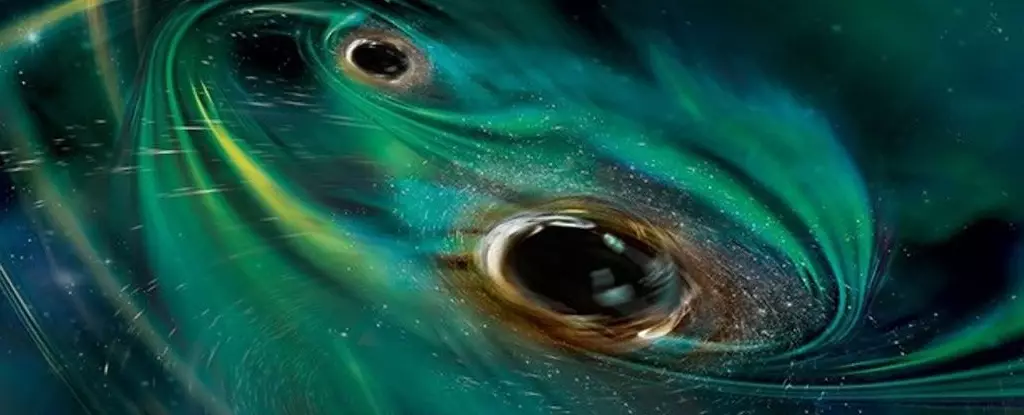In the vast expanse of the cosmos, moments of luminous brilliance often serve as windows into celestial phenomena. One such event unfolded in March 2021 when astronomers detected an unusually energetic burst of light from a remote galaxy, initially classified as the supernova AT 2021hdr. At first glance, it seemed like a familiar story in the realm of astronomical discovery, but subsequent analysis revealed a complexity that hinted at something far more intriguing.
Following its initial observation, the Automatic Learning for the Rapid Classification of Events (ALeRCE) contributed to a growing realization among astronomers: AT 2021hdr was more than just another supernova. By 2022, the Zwicky Transient Facility (ZTF) had charted a series of remarkable outbursts, occurring in intervals of 60 to 90 days. This consistent cadence of emissions was a clear departure from the unpredictable nature of supernovae, urging scientists to explore alternative explanations for this stellar riddle.
Among the competing theories regarding AT 2021hdr’s identity was the concept of a tidal disruption event (TDE). TDEs occur when a star strays dangerously close to a black hole, disintegrating under immense gravitational forces. While this scenario could explain some observed behaviors, the typical irregularity of TDEs clashed with the rhythmic patterns now evident in AT 2021hdr’s bursts.
However, a more promising theory emerged involving binary black holes. Simulations suggested that a massive interstellar cloud caught in the gravitational pull of two black holes would not simply be torn apart; rather, it would be dynamically churned. This interaction would result in periodic bursts of light, aligning with the observations recorded by ZTF.
Confirming the Hypothesis: New Observations from Swift
The scientific journey took a significant leap forward when the Neil Gehrels Swift Observatory captured critical data on AT 2021hdr. Analysis of ultraviolet and X-ray emissions revealed periodic oscillations that perfectly corresponded with the transient bursts detected earlier by ZTF. This alignment provided compelling evidence for the binary black hole model, suggesting the existence of a system with a combined mass near 40 million solar masses, orbiting each other every 130 days.
The significance of AT 2021hdr extends beyond merely identifying a new cosmic ballet; it sheds light on the interaction between black holes and their surrounding environments. As they steadily advance in their orbital dance, scientists estimate that this pair of black holes will eventually merge in approximately 70,000 years. This knowledge poses intriguing questions about how such systems evolve and contribute to galactic dynamics.
Ongoing and future investigations will likely delve deeper into the properties of these black holes and their home galaxy’s influence on their behavior. By connecting the dots between these celestial phenomena and their origins, astronomers remain at the forefront of understanding our universe’s mysteries, reshaping our perceptions of stellar life cycles and interactions. The pursuit of knowledge surrounding AT 2021hdr reinforces the idea that in the expansive darkness of space, every flicker of light holds a story waiting to be told.


Leave a Reply